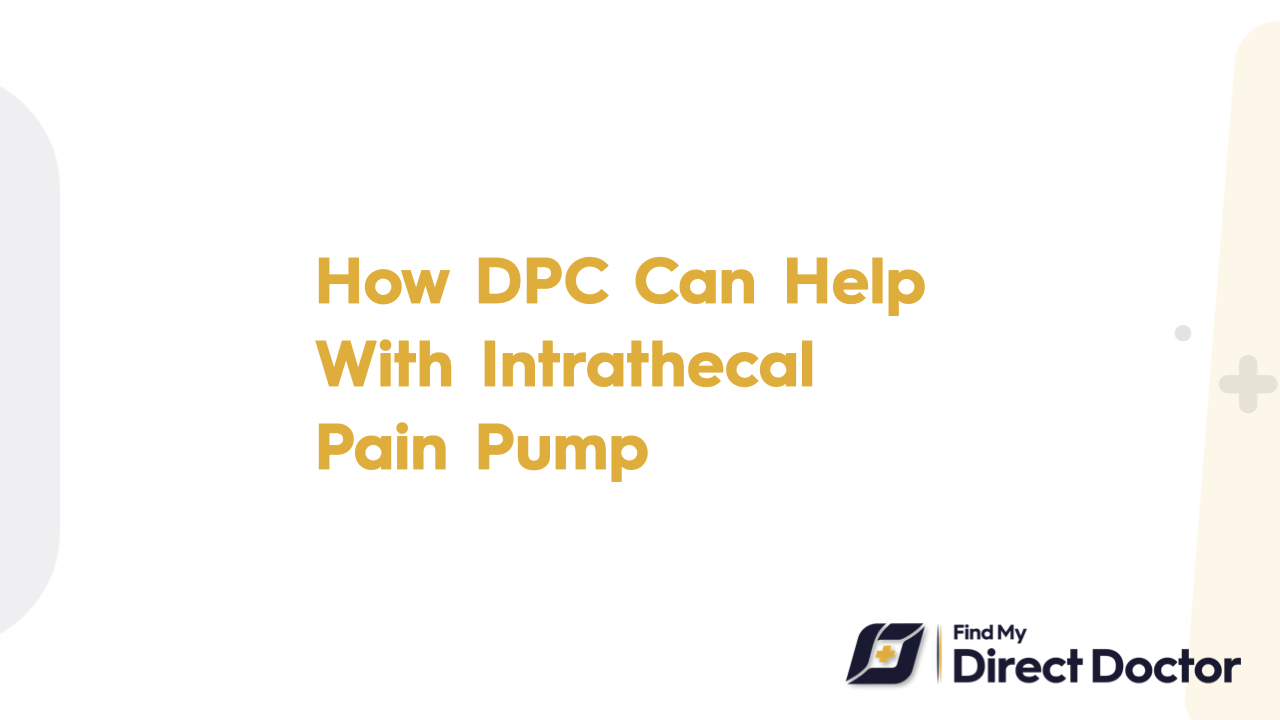Intrathecal Pain Pump and Direct Primary Care (DPC): Targeted Pain Relief, Personalized Care
An intrathecal pain pump delivers medication straight to the spinal fluid. If conventional treatments don't work for chronic pain from cancer, neuropathy, or failed back surgery, DPC makes sure this advanced therapy is handled with care and expertise.

Learning about intrathecal pain pumps: managing pain with precision
An intrathecal pump is put under the skin to send drugs like morphine and ziconotide to the spinal cord. For chronic pain that doesn't respond to oral opioids or nerve blocks.
- Spasticity: Caused by MS or spinal cord injuries.
The procedure consists of a trial (temporary catheter) followed by the placement of a permanent pump.
Important information for patients:
- Uses: Lessens pain by 50–70% with fewer side effects throughout the body.
- Safety: There is a 3–5% chance of infection, problems with the catheter, or an overdose.
- Costs: DPC gets lower rates; traditional costs between 20,000 USD and 50,000 USD.
Risks of untreated pain:
- Dependence on opioids and a lower quality of life.
How DPC Improves the Care of Pain Pumps
Direct Primary Care (DPC) replaces uncoordinated pain management with patient-centered care.
1. A full evaluation before the implant
- Multidisciplinary assessment: Include pain specialists, neurologists, and psychologists.
- Management of the trial phase: Keep an eye on pain relief and side effects during the temporary catheter trial.
- Optimizing medications: Safely switch from oral opioids to intrathecal doses.
2. Easier coordination and cost control
- Surgeon collaboration: Work with anesthesiologists or neurosurgeons who have a lot of experience.
- Advocacy for insurance: Get pre-approvals and work out facility fees.
- Prices that are clear: put the cost of the pre-op, surgery, and follow-up together.
3. Caring for yourself after the implant
- Access 24/7: Take care of sudden pain, pump alarms, or signs of infection right away.
- Adjustments to the dose: Fill the pump every month and change the medications to get the best relief.
- Psychological support: Talk to a therapist to help you deal with the emotional toll of chronic pain.
Success Stories from Real Life
- Case 1: Maria, 58, has failed back surgery syndrome. Maria's DPC team put in a pump, which cut her pain from 8/10 to 3/10 without the need for oral opioids.
- Case 2: John, 45, has spasticity that is related to MS. John's DPC provider gave him baclofen through a pump, which let him walk short distances again.
Questions and answers: DPC's Intrathecal Pumps
- Q: How often do you need to get more?
- A: Every one to three months, done in the clinic with a needle access port.
- Q: Is it possible to get an MRI with a pump?
- A: Most pumps can be used with MRI, and DPC makes sure that the models work with each other.
- Q: What happens if the pump doesn't work?
- A: DPC sets up urgent pump questioning and makes changes if necessary.
- Q: Are there other options besides opioids?
- A: Yes. DPC can prescribe ziconotide (Prialt®), which is not an opioid.
Why DPC is the Best for Advanced Pain Management
The American Society of Anesthesiologists (ASA) stresses the importance of working with people from different fields. DPC gets things done by:
- Cutting down on wait times: 90% of pumps are installed in 4 weeks instead of the usual 6 months or more.
- Lessening problems: Proactive monitoring cuts the number of infections in half.
- How to save money: By getting care in bundles, members save between 10,000 USD and 25,000 USD.
Final Thoughts
An intrathecal pump in DPC is more than just a device; it's a way to get back your freedom. With DPC, you get a partner who takes care of everything, from the implant to the refills, so you can keep getting help and relief. No broken care or long waits—just expert care that helps you live your life to the fullest, even with chronic pain.






